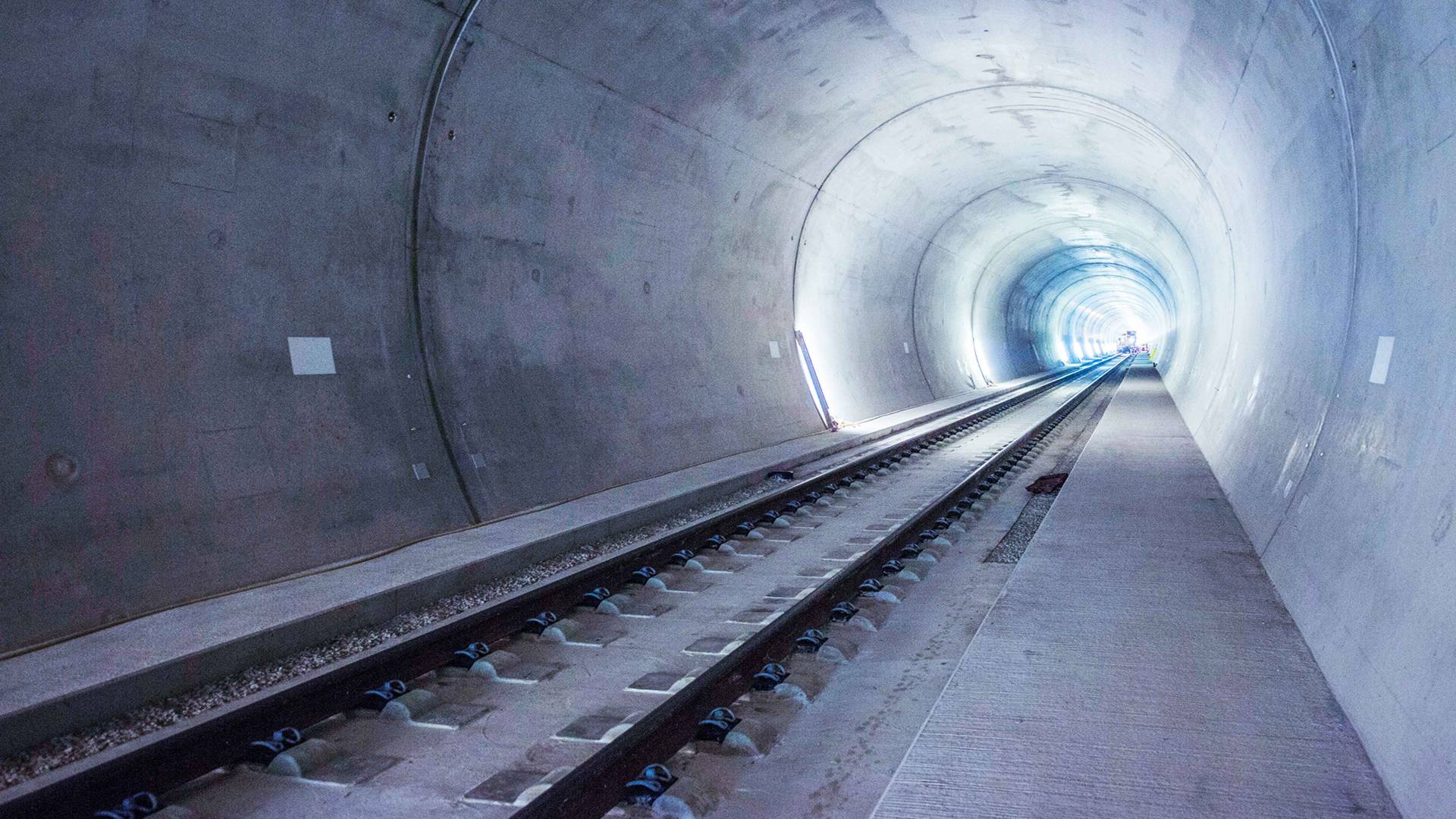- About WACKER
- Investor Relations
- Annual Report
WACKER products make a vital contribution
Protecting and Preserving


Roca Gallery
British architect Zaha Hadid (1950-2016) was the first woman to win the architectural equivalent of the Nobel Prize – the Pritzker Architecture Prize – in 2004. She was known for designs that pushed the boundaries of what was structurally feasible. One such example is the Roca London Gallery – the showrooms of a Spanish bathroom outfitter. The gallery’s architecture of soaring shapes is intended to symbolize the way water flows. The structural challenges involved were enormous: the sections of architectural concrete formed curves on several axes. What’s more, their surface needed to be absolutely uniform and flawless, and adherence to the pattern of joints defined in the design was essential.
Plus, the CEton elements (concrete-embedded composite) had to be as lightweight as possible so as not to overload the structure of the existing building. “That’s structurally not possible” was what several manufacturers of fiber-reinforced concrete first said when they saw the drafts. Only after a Bavarian specialist company used WACKER’s ETONIS® polymer binder to modify the architectural concrete was it possible to render the construction material moldable, give it the necessary mechanical properties and so achieve Zaha Hadid’s spectacular design.


Bebenroth Tunnel
Can you imagine a concrete roadway that allows thousands of liters of water to drain away in just a few minutes? A polymeric binder makes such a road possible, as a pilot project by Deutsche Bahn – Germany’s national rail company – demonstrated in the 1,030 meter Bebenroth Tunnel close to Göttingen, central Germany. About 16 centimeters thick, the road surface is made of open-pored pervious concrete. This type of concrete is able to absorb astonishing amounts of water during torrential downpours, without forming a film on the surface. HeidelbergCement AG developed this road-surface coating with WACKER’s support.
Pervious concrete is made up of aggregate stones broken into cubes measuring five to eight millimeters across, which makes them all roughly the same size. Because such gap-graded stones cannot be packed together tightly, cavities that hold water form: the same effect can be reproduced by pouring peas into a glass. The individual aggregate stones are bound by the cement only at certain points, thereby forming weak bonds. As a result, what you need to ensure the load-bearing capacity of the road surface is a high-performance polymer binder such as WACKER’s ETONIS® 260.


Budapest’s Western Train Station
Opened in 1877, Budapest’s Western train station is considered one of the Austro-Hungarian Empire’s architectural gems. Recently, the station was completely and lovingly restored with EU funding. This magnificent neo-Baroque station was designed by the Paris-based architectural practice of Gustave Eiffel, who became a household name a few years later thanks to the world-famous tower bearing his name. A splendid terrazzo floor covered in floral ornamentation is located in the right wing of the building.
A cementitious screed holds the multicolored aggregate stones together. As a result of its porosity, however, the floor surface absorbs spilled drinks, oils and other liquids. This caused staining that was extremely hard to remove. To prevent future stains, the floor, once cleaned, was treated with SILRES® BS 6920 from WACKER. This binder is an alpha-silane-terminated polyether and was optimized specifically for the impregnation of cementitious flooring. It penetrates deep into the floor, filling the pores and curing to a hard and non-combustible material that has both water-repellent and oil-resistant properties thanks to its chemical structure.


National Stadium, Beijing
The Chinese affectionately call it the Bird’s Nest: curved steel girders with a total weight of 42,000 metric tons wrap around the national stadium in China’s capital Beijing. They are reminiscent of intertwined branches. Hence the nickname of the sports facility, which today seats 80,000 spectators. It was built for the 2008 Summer Olympics, at which swimming star Michael Phelps won one gold medal after another and Jamaican Usain Bolt made sprinting history.
The 33-meter-long, 22-meter-wide and almost 70-meter-high stadium was designed by Swiss architects Pierre de Meuron and Jacques Herzog, who also designed Munich’s Allianz Arena soccer stadium. The well-known Chinese artist and architect Ai Weiwei was also involved in the design. Together, they looked for shapes and images beyond conventional stadium architecture that reference Chinese traditions and cultural characteristics. For example, the four floors of the stadium grandstand are divided into 12 areas. Each represents one of the signs of the zodiac in Chinese astrology.
To protect the grandstand from environmental influences, the Chinese relied on WACKER’s SILRES® BS impregnating silicone building-protection agent. The silicone prevents moisture and salts from penetrating and decomposing the concrete, which would otherwise cause the steel girders to corrode inside.


Tsing Ma Bridge
The Tsing Ma Bridge, one of Hong Kong’s major traffic routes, sweeps across the Ma Wan Channel off the city’s east coast. When it opened in 1997, its span of 1,377 meters made it the second longest suspension bridge in the world. By linking the peninsula to the island of Lantau, the bridge makes it possible for people to transfer quickly and conveniently to Hong Kong’s Chek Lap Kok international airport, one of Asia’s largest and most important passenger and cargo hubs.
High-quality and extremely hard-wearing reinforced concrete was used in the bridge’s construction. All the same, the material is affected by environmental influences such as the humid climate and the salt water swirled up in the spray. To prevent damage, the pillars and other load-bearing parts of the Tsing Ma Bridge were treated with a water-repellent silane cream from WACKER shortly after the bridge’s completion. Penetrating deep into the concrete, this cream has been reliably protecting the bridge and its 206-meter pylons against corrosive salts, thus affording it lasting protection from damage.


Bode Museum, Berlin
The last time the Bode Museum in Berlin hit the headlines was in connection with a spectacular crime. During the night of March 27, 2017, thieves broke into the museum’s coin collection and made off unnoticed with the one of the world’s most expensive gold coins – the Big Maple Leaf, weighing 100 kilograms and measuring 53 centimeters in diameter. Opened in 1904 to commemorate what would have been the 73rd birthday of Emperor Frederick III, the Bode Museum of art and sculpture has no need at all for such hype. This magnificent building on the River Spree was conceived by its curator, Wilhelm von Bode, and built by Prussian court architect Ernst-Eberhard von Ihne. Every year, a quarter of a million visitors come to admire its sculpture collections – some of the oldest on display – and Byzantine art.
Situated on the northern tip of the Museum Island, the Bode Museum is flanked by water on two sides. Over time, the building had suffered considerable damage, which led to its complete refurbishment and modernization between 2000 and 2006. The materials used to restore the building included high-performance products from WACKER. Silicone microemulsions made it possible to drain particularly endangered sections of the basement. In this way, the brick walls are protected against rising damp and hence further damage.


Fire-Protection Coatings
Modern, large-scale buildings are rising up higher and higher at a breath-taking rate, especially in metropolitan areas of Asia. The building and roof structures are often made of steel, like the ones shown here in Singapore’s Gardens by the Bay park. This is because steel skeletons have a low dead load, but a high load-bearing capacity and are usually quick and easy to assemble. However, the taller or larger the building, the greater the importance of fire protection.
To prevent the steel frames from buckling within minutes during a fire, they are provided with special fire-protection coatings. When a fire breaks out, the coating swells by 10 to 100 times its original thickness to form a thermally insulating foam jacket around the steel column. The buildings therefore withstand the flames longer, giving rescue teams precious time for evacuation. A special dispersion from WACKER serves as a binder, ensuring the necessary elasticity, strength and adhesion of the protective layer.


